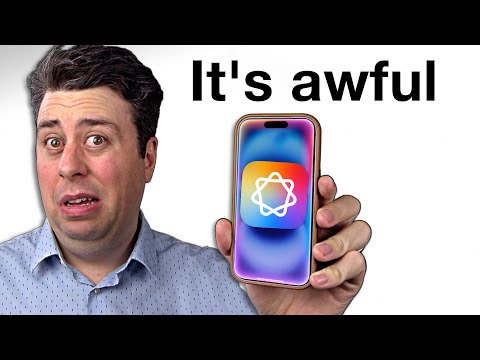Let’s face it: the internet is a chaotic place. You can find everything from cat videos to thought-provoking think pieces—sometimes all in one place. The one thing that’s pretty universal, though?
Websites need to make money to keep running. Whether it’s to pay writers, support servers, or just keep the lights on, monetization is a must. And over the years, two main methods have stood out: ads and paywalls.
So, which one works better in today’s digital world? Ads that pop up on your screen every other second, or paywalls that feel like you need a secret handshake just to read an article? Let’s dive in and see which one has the upper hand.
The Case for Ads: The Old-School Hero of the Internet
Ah, ads. The classic. The tried-and-true method that has helped websites stay afloat for as long as we can remember. Think back to the early days of the internet, when you could read a blog post or scroll through your favorite forum and suddenly, BOOM, a banner ad for a suspiciously cheap mattress or the latest weight-loss miracle pops up.
Ads have been the backbone of the web, from flashy banners to auto-play videos (which, let’s be real, are the worst).
But here’s the thing—users aren’t exactly in love with ads. In fact, most people hate them. If you’ve ever clicked the “skip ad” button faster than you can say “I didn’t sign up for this,” you know exactly what I’m talking about. And let’s not even get started on pop-up ads—those are the online equivalent of someone knocking on your door when you’re just trying to enjoy your pizza in peace.
Still, ads have their perks. They’re the internet’s way of saying, “Hey, let’s cast a wide net.” Websites can make money from people who don’t even interact with the content. Ads are all about volume. Every time you glance at an ad (even if you ignore it), the website gets a little cash. It’s like a vending machine where you don’t have to buy anything to make the operator rich.
But let’s be honest—ads come with some serious baggage. They slow down websites, mess with your browsing experience, and sometimes seem to follow you around like a creepy ex. You search for a toaster on Amazon, and suddenly every site you visit has ads for toasters. It’s as if the ads know you better than you know yourself.
In a perfect world, ads wouldn’t be so intrusive. But in the current state of the internet, they’re often the only way smaller websites can keep the lights on.
The Rise of the Paywall: The Subscription Revolution
On the flip side, we have paywalls. These are the shiny new kids on the block, and they’ve been making quite a splash lately. Instead of relying on ads, paywalls ask you for cold, hard cash in exchange for exclusive content. Publications like The New York Times, The Verge, The Wall Street Journal, and The Washington Post have all embraced the paywall model, and they’re not shy about it.
The idea behind paywalls is simple: if you want premium content, you gotta pay for it. Think of it like a VIP club where the entry fee is a subscription. Want to read the latest investigative piece or access in-depth analysis? Fork over a few bucks.
With the rise of platforms like Netflix, Spotify, and YouTube Premium, people have gotten used to the idea of paying for content without being bombarded by ads.
The beauty of paywalls is that they don’t rely on the ever-looming presence of ads. You get an uninterrupted, ad-free experience. No random mattress ads to ruin your flow. It’s just you and the content—like a peaceful oasis in the desert of the internet.
But here’s where paywalls can get a little tricky. Not everyone is willing to pay for content. If you’re like most people, you probably don’t want to pull out your credit card every time you want to read an article. And, let’s face it, not every article is worth a subscription. I mean, is that “Top 10 Ways to Fold a T-Shirt” really worth $5 a month? Probably not.
Plus, there’s the issue of exclusivity. Paywalls create a digital divide, where only those who can afford it get access to certain content. Not everyone has the luxury of subscribing to every site they read. It’s like being invited to a party where only a select few get to join. Not exactly the most inclusive vibe.
So, Which Is Better? The Great Debate Continues
Here’s the million-dollar question: which is the better model—ads or paywalls? The truth is, it’s not an either-or situation. The answer depends on what you want to achieve.
Ads offer several advantages, especially for content creators looking to generate revenue without charging users directly. They are accessible and come with a low barrier to entry, making them a popular choice for websites with large audiences.
Ads allow users to access content for free, which is a significant draw for many. However, there are clear drawbacks. Many users find ads annoying, and they can slow down website performance, leading to a frustrating experience. Additionally, there are privacy concerns surrounding ads, particularly with data tracking and targeting, which can make users feel uncomfortable.
Paywalls, on the other hand, can provide a more predictable and stable stream of revenue. By requiring users to pay for content, they ensure that the creators are compensated for their work.
A major benefit of paywalls is the premium experience they offer, free from the distractions of ads. For users, this can feel like a more exclusive, ad-free browsing environment. However, paywalls come with their own set of challenges.
They can alienate users who are unwilling or unable to pay, potentially reducing the site’s audience. Additionally, for a paywall to be successful, the content behind it needs to be compelling enough to justify the subscription cost, which means maintaining a high level of quality and exclusivity.
What if the solution isn’t choosing one or the other? Some websites have figured out a hybrid model, offering some free content with ads while locking more exclusive material behind a paywall.
It’s like a buffet with a VIP section. You get the basics for free, but if you want the good stuff, you’ve got to cough up some dough.
The Future: Ads, Paywalls, or a Bit of Both?
The future of monetization isn’t black or white—it’s a bit of a gray area. Sure, ads aren’t going anywhere, but they’ll likely get smarter and less intrusive. Think more subtle, less in-your-face ads that don’t interrupt your experience.
Paywalls, on the other hand, will likely evolve too. Microtransactions, freemium models, and other subscription options will allow users to pay for exactly what they want without committing to an all-you-can-eat content buffet.
At the end of the day, it all comes down to balance. If you’re a content creator, it’s all about finding the right mix that works for you—and your audience. After all, the internet’s a big place, and you don’t want to be the last one to realize that people don’t like pop-up ads, but they’re happy to pay for good, uninterrupted content (if it’s worth it).
And let’s not forget: the user is king. If they don’t like what you’re offering—whether it’s ads or a paywall—they’ll just click away and find something else. You don’t want to be the one who’s stuck selling toasters to people who just wanted to read an article on how to bake banana bread.
So, maybe the real secret isn’t which one is better, but how we can make both ads and paywalls work in harmony—without annoying the living daylights out of everyone.





